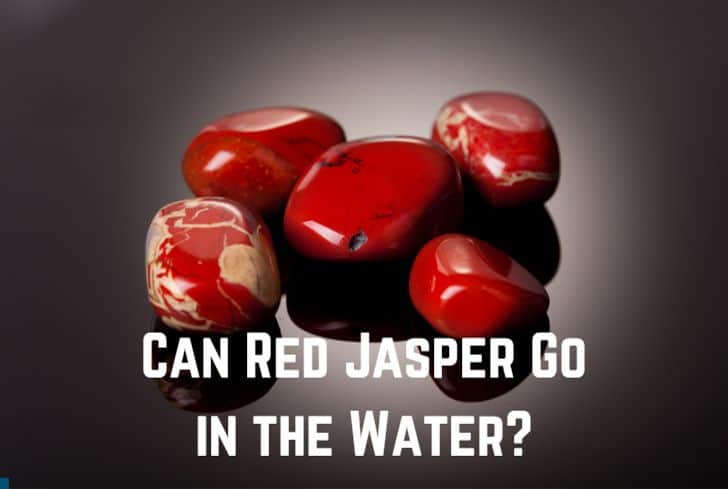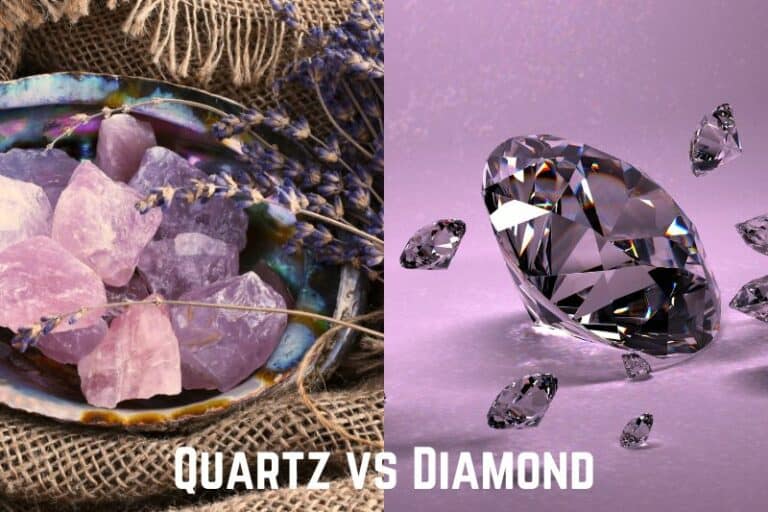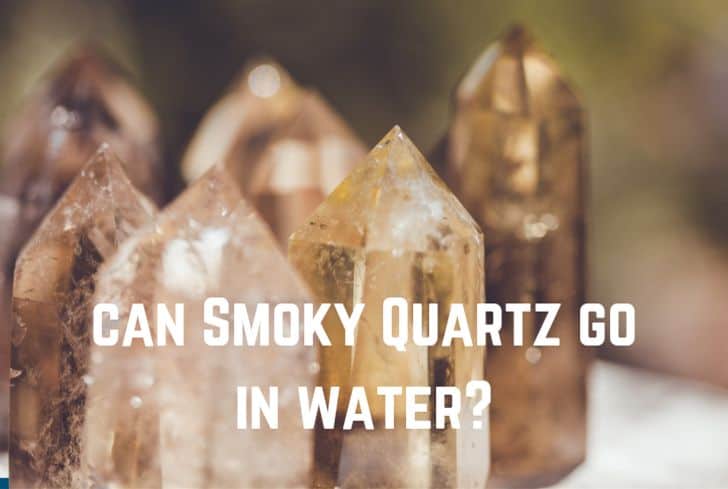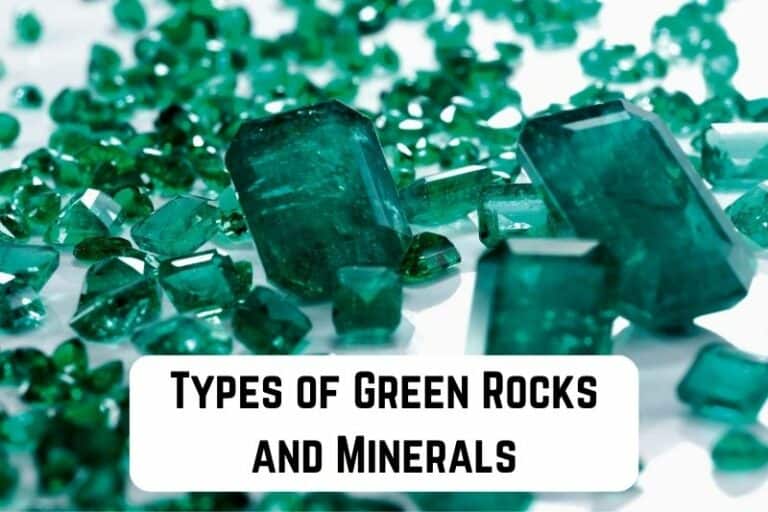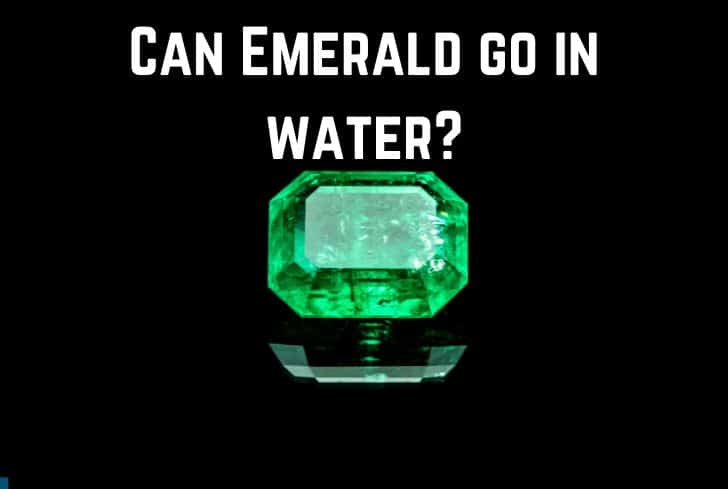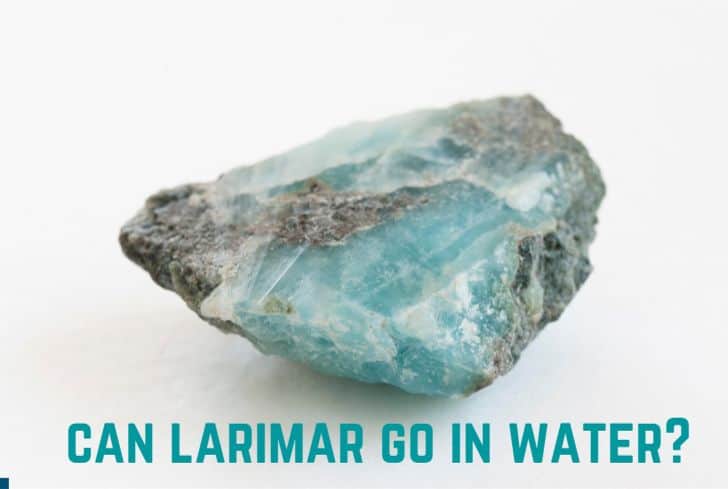Can Peridot Go in the Water? (Yes…)

Peridot is a yellowish-green variety of olivine and has the chemical formula of (Mg, Fe)2SiO4. It is one of the few gemstones that occur in only one color, and it has been prized since antiquity for its beautiful appearance.
Have you ever wondered if Peridot can go in the water? In this article, we are going to discuss just that. We will look at the stone’s interaction with water, salt water, and sunlight. Then we will talk about which stones are unsafe to go in the water. Finally, we will look at Peridot’s properties & uses.
Read: Can Jade Go in the Water?
Is Peridot Safe to Go in the Water?
Yes, Peridot is safe to go in the water. It has a value of 6.5-7 on the Mohs Hardness Scale, which is above the minimum value required for minerals to be safe underwater. However, like all minerals, it should not be immersed for too long.
Mohs Hardness Scale is a relative measure of a mineral’s resistance to scratching. Besides that, it also indicates a stone’s relationship with water. Usually, a value over 5.0 implies that the stone is safe for immersion.
Since Peridot has a value of 6.5-7 on the Mohs Hardness Scale, it is quite safe in the water. However, like all stones, they should not be immersed for too long. Water enters the crevices of stones, expanding their cracks.
These fissures can slowly damage the structure of the stone, making it prone to cracking. Water also tarnishes the appearance of stones. It strips off the polish from their surface, making them look duller.
This is especially bad for a stone like a peridot, whose beautiful green hues are precisely what make it so valuable. Therefore, it should only be immersed for a short while for cleaning and then be air dried.
Can Peridot go in the sun?
Yes, Peridot is safe to go in the sun. With a value of 6.5-7 on the Mohs Hardness scale, Peridot is a relatively hard mineral and it also does not have any element that can react adversely with sunlight, so it can be out in sunlight for a short while.
Placing stones out in the sun is a common way of recharging them. However, this method is not suitable for all stones; for example, a stone like amethyst will lose its color in the sun. Some stones can even get cracked due to prolonged exposure to sunlight and heat.
However, Peridot is relatively safe in the sun. The Egyptians even called Peridot the “gem of the sun”, so it has a long history of associations with sunlight. When kept out for a considerable amount of time, your Peridot stone will get recharged with the sun’s energy.
However, make sure that you do not leave the stone out for too long. It’s also better to do this during the day because sunlight is much more gentle during the morning than afternoon. You can also place the stone behind a window pane to protect it from UV rays.
Can Peridot Go in Salt Water?
No, Peridot should not be put in salt water. Although its hardness is above the minimum value required for minerals to be safe underwater, it should still not be put in salt water. This is because salt water is corrosive and can damage Peridot, like any other stone.
When dissolved in water, salt can seep into the crevices of the stone. Salt particles remain there even after the water evaporates, and they widen the cracks. These fissures can slowly damage the structure of the stone.
Salt water also tarnishes the appearance of the stone by stripping off the polish—this is especially bad for Peridot , whose colors and luster are its biggest charms. Finally, salt can also react adversely with the elements of the mineral, especially those having iron.
Saltwater hastens the process of rusting by making the metal lose its electrons more easily. Therefore, it is best not to immerse Peridot in salt water. It can be cleaned with normal water and soap, as we will discuss later.
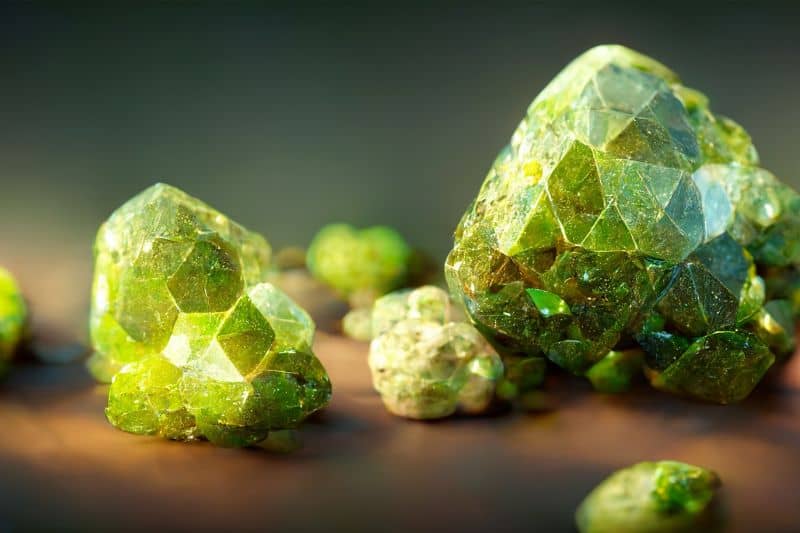
Does Peridot Fade in Sunlight?
No, Peridot does not fade in sunlight. Many stones, such as amethyst and calcite, are not safe from the sun; they can lose their color and become brittle. However, Peridot is perfectly fine, and it can be charged using sunlight.
Amethyst, being a member of the Quartz family, is not safe in the sun. Its color comes from iron, which will fade due to sunlight. Similarly, calcite can also lose its color and become brittle.
However, Peridot is safe in sunlight, as long as it’s kept out only for a considerable amount of time. Keeping stones out in the sun is a popular method of recharging them, and it is perfectly safe for Peridot .
Properties and Uses of Peridot
These are the properties of Peridot:
- Appearance: Peridot is one of the few gemstones that only occurs in one color, that is, green. However, the intensity and tint of the green depend on the percentage of iron in the crystal structure. So, the appearance of the stone can be yellow, olive, or brownish-green. Pure grass green is the most prized color in Peridot. Check out this video by AF Media Group to look at Peridot.
- Occurrence: Peridot is rarely found on Earth’s surface because of its chemical instability. Instead, it is found in mafic and ultramafic rocks found in the lava of the mantle. Peridot is also found in meteorites. The main source of Peridot today is the San Carlos Apache Indian Reservation in Arizona. Other sources include Australia, Brazil, China, etc.
- Composition & Structure: Peridot is a variety of olivine, and it has the chemical formula of (Mg, Fe)2SiO4. It consists of isomorphic olivine, silicate, magnesium, and iron, which are present in an orthorhombic crystal structure. Inclusions are common in the stone, depending on the location where it is found. The stone breaks with a conchoidal fracture.
Uses
- Gemstone: Due to its beautiful green color, Peridot is widely used as a gemstone. It is usually employed in rings, earrings, and necklaces.
- Industrial Use: Peridot has a high melting point and is chemically stable, making it suitable for many industrial applications. It is used as a refractory material in furnace linings and crucibles. Abrasive materials such as sandpaper also use Peridot.
- Cultural Use: Peridot is quite significant culturally as it is believed to drive away fears and nightmares, protecting its users. It is also said to carry “inner radiance”, that sharpens the mind and makes one realize their spiritual purpose.
What Crystals Should You Not Put In Water?
These are the crystals that you should not put in water:
- Halite
- Selenite
- Pyrite
- Hematite
- Apatite
- Fluorite
- Gypsum
- Azurite
- Turquoise
- Malachite
Some of these stones are so soft that they will completely dissolve in water. Others may get faded, as water strips off their polish. Finally, water can also damage their structure by seeping into their cracks and widening them. All in all, these stones should not be immersed.
Peridot is not included in this list, and it is quite safe in water.
How to Cleanse and Take Care of Peridot?
Peridot has a value of 6.5-7 on the Mohs Hardness Scale, meaning that it is safe to go underwater. Therefore, we can use water to clean the stone. Follow these steps:
- Mix mild soap water with lukewarm water. Make sure that the water is not too hot, as excessive heat can damage the stone.
- Soak the Peridot stone in the solution for 3-5 minutes. This is the ideal duration for most stones; prolonged immersion can harm them.
- Take a brush with a soft bristle and scrub the stone, ensuring that you clean the edges and the crevices of the stone.
- Rinse the stone in running water and wash off any excess soap.
- Let the stone dry in the air. Make sure you flip it around to remove any water from the crevices.
Besides cleaning with soap and water, there are some other things you should also keep in mind. Although Peridot has a considerable hardness (6.5-7), it can still get scratched by household dust (which also has a hardness of around 7).
Moreover, Peridot is susceptible to stress fractures. Therefore, try to avoid activities that might scratch the stone (such as gardening) and also steer clear of settings that may put stress on the stone. Peridot jewelry usually requires protective settings and they should only be worn occasionally.
This is because the stone is sensitive to acids, even those found in perspiration. Besides acids, hot water and excessive heat can also damage the stone. Finally, ultrasonic and steam cleaners for Peridot.
Read: Can Kyanite Go in the Water?
Conclusion
In this article, we have talked about the interaction of Peridot with water. Having a value of 6.5-7 on the Mohs Hardness Scale, Peridot is a relatively hard mineral that is safe to go in the water for a considerable time. However, it is sensitive to scratching and should be handled carefully. We also looked briefly at the properties and uses of Peridot.

